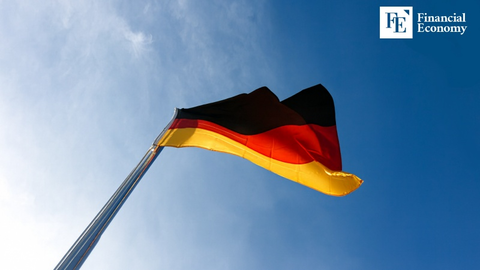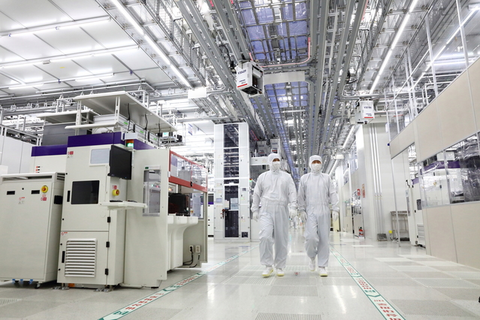LG Display Escapes Deficit, Invests USD 910 million in OLED Next-Gen Technology Infrastructure
Input
Modified
“LGD sheds LCD in China” / “LGD exits LCD in China” “Goes all-in on high-end OLED in Korea” “Goal: strengthen profitable next-gen products”

After enduring three consecutive years of losses, LG Display is taking a bold yet calculated step forward—embarking on approximately USD 910 million investment in next-generation OLED infrastructure. This move, driven by a renewed sense of financial stability and strategic urgency, signals the company’s intent to reclaim its footing in the fiercely competitive global display market. With pressure mounting from Chinese rivals and technological leadership shifting across the sector, LG Display is leaning into its strengths: premium OLED innovation and a leaner, more disciplined growth model.
The decision also reflects a broader trend of re-shoring high-tech manufacturing capabilities, as LG reinvests capital previously deployed in overseas ventures back into domestic production. The timing is telling—coming just after the company swung back into the black with two consecutive profitable quarters, including a USD 24 million operating profit in Q1 2025. This renewed financial breathing room is being channeled into futureproofing OLED competitiveness while keeping financial risk under tight control.
OLED Investment Anchored in Stability and Strategy
At the center of this initiative is LG Display’s decision, announced during a June 17 board meeting, to invest USD 917 million through June 30, 2027, into next-generation OLED technologies. The funds will be concentrated at the company’s Paju plant, one of its key domestic production hubs. This investment is not aimed at expanding production scale but rather enhancing the quality and efficiency of existing OLED lines. Specifically, it focuses on improving panel resolution and reducing power consumption—key demands in both consumer electronics and automotive applications.
An LG Display spokesperson characterized the decision as a forward-looking strategy to strengthen the company’s differentiated technological competitiveness and secure leadership in the global display market. “We plan to focus on building infrastructure for panels and modules equipped with premium next-generation OLED technologies,” they stated, underscoring that this project is a core part of the company’s mid-to-long-term capital expenditure (CAPEX) strategy. LG also reaffirmed its commitment to financial health, emphasizing that the investment will proceed alongside ongoing efforts to streamline debt and improve its capital structure.
Symbolically, this is also a “reshoring” milestone. LG Display is channeling funds from the sale of its Guangzhou LCD production line—previously a major offshore asset—back into Korean soil. This reversal of capital flow marks a pivotal shift in the company’s global footprint. Years earlier, LG Display had been forced to invest in its Paju facility due to delays in regulatory approval from the Chinese government for its 8th-generation LCD plant. But when Guangzhou began mass production of 8th-gen LCDs in 2014, it resulted in duplicate investments. The new investment represents a cleaner, more consolidated focus on domestic capacity and innovation.
This pivot comes as the OLED market continues to outpace its LCD predecessor. Between 2022 and 2024, LG Display weathered multitrillion-won losses as it moved to restructure its business around OLED. That gamble is beginning to pay off. According to market intelligence firm Omdia, the global LCD market—valued at USD 78.9 billion in 2024—is expected to grow at a modest annual rate of 1% through 2028. In contrast, the OLED market, worth USD 53.3 billion in 2024, is projected to grow at 5% annually and reach USD 68.6 billion by 2028.
Cautious Stance on 8th-Generation OLED Expansion
Despite being the world’s first company to mass-produce OLED TV panels in 2013, LG Display’s grip on the large-panel OLED market has loosened. The OLED TV market failed to meet early expectations, and leadership shifted toward small- and mid-sized OLED displays—a segment now dominated by Samsung Display. Fueled by booming smartphone demand, Samsung invested USD 3 billion in 8.6-generation OLED lines in 2023. That same year, BOE, a rising Chinese powerhouse, invested a staggering USD 8 billion to build its own 8.6-generation OLED production line.
Rather than compete head-on in infrastructure scale, LG Display has focused on reshaping its business structure. From 2020 to 2023, the company grew OLED’s share of total revenue from 32% to 55%, and plans are underway to expand OLED applications across smartphones, IT devices, TVs, and even vehicles. These diversified OLED strategies are central to LG’s roadmap for full-year profitability after three straight years of red ink.
Yet notably absent from the company’s current roadmap is any direct move into 8th-generation OLED production. LG Display has made clear that this round of investment will not fund new 8th-gen manufacturing lines. Instead, it aims to enhance the productivity and performance of its current OLED infrastructure. The decision reflects a highly strategic calculus: in a year focused on securing profitability, the company is not prepared to risk significant capital without guaranteed clients in hand.
The company reinforced this stance during a January earnings call, firmly denying any plans to invest in 8th-generation OLED lines. In contrast, Samsung and BOE are racing to operationalize their 8.6-generation facilities by as early as 2026. LG’s deliberate pacing highlights a philosophical and financial divergence from its more aggressive competitors.

Financial Pressure and Market Uncertainty Shape Investment Outlook
While LG Display’s return to profitability is encouraging, the company remains heavily leveraged, carrying a debt load of USD 17.5 billion and a debt-to-equity ratio of over 308%. In Q1 alone, it paid USD 148 million in interest. These figures cast a long shadow over any consideration of large-scale expansion. Given the aggressive spending by rivals on new 8.6-gen OLED infrastructure, LG Display must weigh its financial constraints carefully.
Adding to the caution is the lukewarm demand for OLED in IT applications. While OLED panels are increasingly favored in premium devices like gaming laptops and high-end tablets, overall market penetration remains modest: 1.2% for monitors, 4.6% for laptops, and 6.6% for tablets as of 2024.
Apple’s OLED iPad Pro—launched with high expectations—fell short, selling only around 6.5 million units instead of the forecasted 10 million. This shortfall had direct repercussions for LG Display, which had built a dedicated OLED production line for iPad panels. When demand faltered, so too did panel orders. According to DSCC, OLED panel shipments for the iPad Pro reached only 5.7 million units, significantly below projections.
In response, LG Display has pivoted to using the same production line for both iPhone and iPad OLED panels. An analyst from the securities sector noted, “If performance had even been average, LG Display might have accelerated its entry into 8th-generation IT OLED. But the results were underwhelming, and with Apple possibly delaying the OLED MacBook Air launch to 2029, there’s no need to rush.”
This prudent, phased approach is now LG Display’s blueprint: focus on securing profitability in small- and mid-sized OLED markets, continue improving operational efficiency, and only consider new investments once financial and market conditions allow. With this balanced mix of ambition and restraint, LG Display is positioning itself not for immediate dominance, but for sustainable leadership in a rapidly evolving global display industry.





















